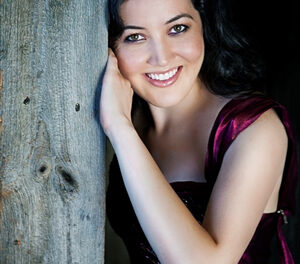Those who seek opportunities to hear live music in and around the Triangle truly live in the midst of riches in terms of quality, quantity, easy access, and relatively modest ticket prices. Numerous arts organizations present well-known artists from around the world as well as home-grown favorites like the Ciompi Quartet and the Mallarmé Chamber Players, just to name a few. I’ve noticed over the years that there is a middle ground of artists who have not yet achieved name recognition or have little or no local base, and these tend to get short-changed or practically ignored. This is really a shame, especially when the musicians turn out to be consummate artists who present levels of playing as high as any of the “famous” names.
On October 22, the Durham Symphony Orchestra presented the Arcangelo Piano Quartet in concert. You say you heard nothing about it? Well, you are probably right. Except for a few block listings in the usual area papers, I don’t recall seeing any sort of advertisement or promo for this excellent group. When influential organizations with hundreds of contacts take on the roles of presenters, they owe it to the artists and the community to let us know about it. When I counted, there were twelve people in attendance! The PSI (People’s Security Insurance) Auditorium in the Durham Arts Council Building is a stark, user un-friendly venue, and the sound of just a handful of people clapping in such a place is very depressing.
The Arcangelo Piano Quartet is made up of Irena Kofman, piano, Izabela Cohen, violin, Yang Xi, viola, and Steven Sigurdson, cello. They have toured all over the world and are currently quartet-in-residence at the Resurrection Music School in Cary. They have an excellent website at http://www.arcangelopianoquartet.com/default.php .
They began their program with a work many people would probably be surprised to know even exists – the Piano Quartet by Gustav Mahler. The name Mahler conjures up the image and sound of massive orchestral forces, so this work is something of an anomaly, and in fact it is not very Mahler-like. Written near the end of his formal musical studies, it is a work steeped in the fashion of the day; it contains a bit of Brahms, some Wagner, and projects a Romantic aesthetic that is indistinguishable from many compositions of the day, with very little hints of what was to come. The Arcangelo Quartet immediately showed sensitive, attentive and technically adroit talents, but the artists could not save what is Romantic harmonic meandering at its worst. Based on several letters, it is known that Mahler destroyed much of his early chamber music. This should have been tossed along with the others.
No such criticism can be thrown at another giant of roughly the same era – Richard Strauss. While he, too, is known for large, generally fiendishly difficult orchestral and operatic scores, his Four Pieces for Piano Quartet are charming, accessible works that make you want to search out more of his small-scale compositions. There is even an “Arabischer Tanz” (Arabian Dance) movement that is quite authentic-sounding and that includes some typically Straussian technical fireworks that amateurs need not attempt. The quartet displayed a tight rhythmic blend along with a degree of freedom that suggested a wonderful sense of rubato and flexibility. It was during this work that it became apparent that this is indeed a world-class ensemble that should have been playing to a packed house.
The piano quartet configuration has nowhere near the repertoire that string quartets or piano trios have, so these ensembles almost always include one of the great standards of the genre in their concerts. On this occasion, it was the Piano Quartet, Op. 47, of Robert Schumann. It and the somewhat more famous Piano Quintet, both written in the key of E-flat, share much of the same style and feel. As a pianist-composer, Schumann wrote an especially virtuosic part for the keyboard. Kofman was brilliant in her phrasing and control, and she seemed quietly but effectively to lead the ensemble without being pushy or obvious about it.
It is very difficult to instill one’s own voice into such well-known works, but the Arcangelo Quartet gave a personal and distinct reading of one of the gems in all of chamber music.
Encores are meant to reward audiences and leave them wanting more, and the few people present in Durham will certainly want to hear this ensemble again because the musicians responded generously to the few clapping hands by playing one of the most exhilarating works I’ve heard in a long time – a “Tango Fugato” by the Argentinian composer Astor Piazzolla. It contains possibly the longest and most intricate fugue subject I have ever heard, and it was given at a breakneck speed, brilliantly articulated and shaped by all the players. Combined with the tango rhythms, this made it one breathtaking ride to end the evening. Players such as this deserve better publicity and more people at their concerts.











